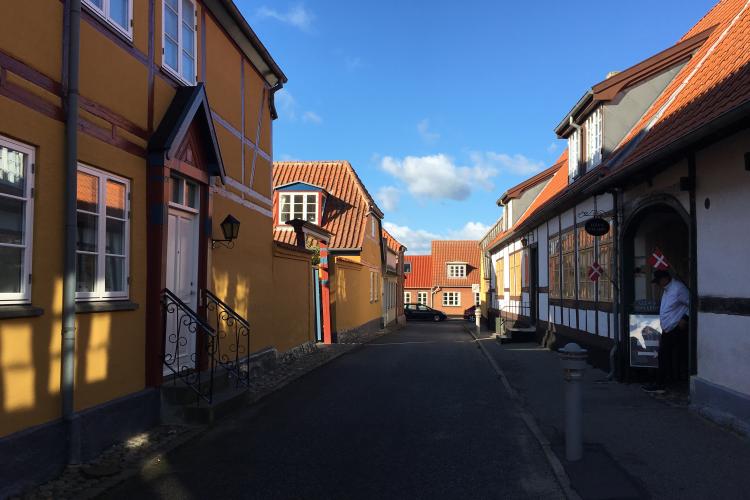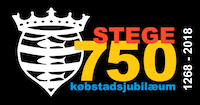Dye Works Street
Farverstræde emerged as a narrow passage between the former Langestræde and the Stege main square after the block of houses between the church and the square was built in the late Middle Ages. The name was given after Farvergården – the dye works house - which from 1758-83 belonged to the prison and draper’s house in Langestræde. The dye works house was located on the corner of Farverstræde and the square, and the half-timbered house that led up to here functioned as a horse stable and stamping workshop for the dye works. Every day, the inmates from the prison and draper’s house walked through Lange-stræde to the dye works house where they worked, dyeing the woven fabrics.
In keeping with the original name of the street (Farver/Colour), there now exists a picture gallery and shop for art materials.
After passing Farverstræde no. 6, you will see a small house built in 1857, just before the entrance to Kammerrådgården (herring no. 17). Formerly, this functioned as a laundry and public chambers. Here, a cheerful life unfolded, and the nickname for this house remains as ‘Sorgenfri’ (i.e. carefree) until today.




